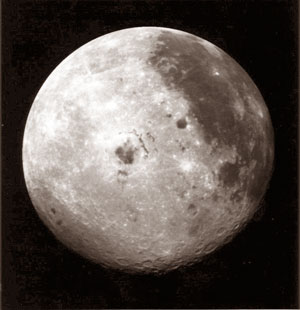China is ready for the moon
Dr. Capt. A. Heennilame SLUNF
It is fairly known that China is the origin of rockets and kites, but
only a few are aware that the first experiment in manned space flight
also took place there.
A minor official of the Ming dynasty (1368-1644) Wan Hu of the 14th
century decided that China’s pyrotechnic technology was advanced enough
to launch a man into outer space.
As such he had a chair built with 47 rockets and two huge kites
attached and strapped himself and got the fuse lit, after the smoke of
the huge explosion cleared, Wan had disappeared, never to be seen again
and in his memory a creater in the far side of the moon was named as Wan
Hu crater by us scientists.

The Ming dynasty book “A record of military affairs” by Mao Yuan yi
describes various types of rockets and gunpowder which were then a part
of the Chinese arsenal and by the 13th century China’s rocket technology
was introduced to Europe via India and Arab countries.
New China was founded on the 1st October 1949, and in 1955 Qian Xue
Sen known as the father of China’s missile returned to China from the
US. And in 1956 China first embarked on rocket research and development
and on the 24th of April 1970 China’s first man made satellite DONG FANG
HONG I was launched into space from a Long March I carrier rocket.
Making steady progress from conventional to low temperature trust
series connection to series plus binding from one to multiple satellite
launched from single rocket and from low earth, to geo-stationary
transfer orbit, China has mastered and developed the capabilities of a
successful moon launch.
Development of carrier rockets in China
Since 1958, China has developed biological meteorological geophysical
and space scientific experimental rockets.
Long March - 1 (LM - 1)
Consists of two medium range-long range missiles and one solid rocket
develops a thrust of 1,040KN used a launch China’s first man made
satellite Dong Fang Hong (DFH - 1) on April 24 - 1970 LONG MARCH - 2 (LM
- 1).
Developed on the basis of intercontinental missiles since 1975, and
now used mainly to launch polar orbit satellites and low earth orbit
satellites. LM 2E carrier rocket developed in 1990 and used to send
foreign satellites into orbit.
LM. 2F developed for the specifies propose of launching shen zhou
manned spacecraft and used to launch shen zhou V space craft on 15th
October 2003, this marks China’s first manned space flight.
Long March 4 (LM 4) has a take of thrust of 300 tons and has a earth
transfer obit payload capacity of 1.65 tons.
Long March 5 (LM - 5) is still under development with a carrying
capacity of 25 tons since November 1988 China has provided 2.4
international launches and sent 30 foreign satellites into orbit.
China’s satellite launch centres
Jiuquan satellite centre: constructed in 1958 in the Gobi desert
North Western China. Known as “number one space city of China” it is now
China’s low earth orbit satellite launch site.
Tai Yuan Satellite Centre near mean Tai Yuan Shan xi used for sun
synchronic orbit satellite long range launches etc.
Man made satellite
On the 17th of May 1958 Chairman Mao ze Dong announced to the nation
that China will also make man-made satellites and on the 24th of April
1970 the dong fan Hong satellites was launched from Jiu Quan satellite
centre making China the world’s fifth country with satellite
capabilities.
In 1975 China became the third country in the world to have the
capacity to recover satellites. In 1981 China became the fourth country
to launch multiple satellites from one rocket.
So far China has launched the recoverable remote-sensing satellite
series the Feng Yan metrological satellite series the Shi Jian
scientific exploration and technical experiment series the Zi Yuan
georesocels series Bei dou navigational and positioning series the feng
yan - 1 and feng yan 2 have been designated by the world metrological
organization as an international series.
China’s lunar probe is in three phase - the first period is from
years 2004 - 2007 where a moon probe will circle the moon for three
dimension mapping, exploring earth moon space prospecting surface
elements.
The second is between 2007-2012 will see a wheeled recover land on
the moon to study lunar surface. The third period between 2012-2017 the
wheeled rover will return to earth with samples and between 2020 and
2025.
China hopes to see a moon landing by Chinese astronauts and in
January 2004 the state council approved the change project and by 2006
the long March V Carrier rocket and Change Satellite entered production.
Investment for the project will only be 1.36 billion yens with more
than 10,000 people involved in it. China is now developing air lock
modules and space suits for a moon landing.
In ancient times, giants lived in Northern China. Their leader was
Kua Fu. One year there was a merciless heat wave causing much loss of
human life.
Kua Fu vowed to capture the sun and make it submit to mortal command.
He ran towards the sun and was exhausted so first he drank the yellow
river and made rivers dry but was still unable to satisfy his thirst so
he headed North where there was a large lake but died before reaching
it. |



